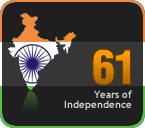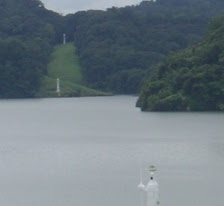I wanted to talk about the navigation in confined waters today. Navigation by itself is a very tricky thing. The basic purpose of Navigation to find out "where you are" & as a derivative second step, "where you are going". In the open sea, the beauty of Navigation as an art worked upon over the thousands of years becomes highlighted. To me, there are few things more beautiful then the act of setting down in paper, your position within a mile on the chart, using a star many many light years away.
But lets discuss ocean navigation some other time. Today as the topic suggests, we shall deal with Inland navigation. One might reason that with a sign board every 50 meters, it would be easy to figure out where you are. And I would have to agree. Inland navigation is not really about "Where you are going", but about "How you are getting there safely". Due to the restricted waters of Canals & channels, it becomes critical to keep ships in very predefined routes & ensure that they don't go off the axis by more then a few meters. When you are dealing with ships around 200 meters in length displacing more then 50,000 MT of water, this calls for some expert handling & all the help that you can get.
Navigation in inland waters is usually done in Rivers and channels. The easiest way to mark these is by the placing of Buoys. I think I had spoken about the IALA buoyage system some posts back. In the Panama canal, if you are on the southbound transit , you keep the Green buoys to your Port.In the picture above you can see the canal marked by Buoys. This is a fairly typical layout of the canal & there are an amazing number of bouys per mile in the Panama Canal. At night, a straight stretch of the Canal actually reminds you of a runway lit up at night with the landing lights.
Apart from the Buoys, another Navigational aid of much importance, especially when the channel is not very well marked, is the use of the Leading lights. These lights are shown in the second picture as I'm not sure you can see them well in the first.
Simply said, if these lights are in a straight line when you see them from the bridge, it would mean that you are in the middle of the Channel. If they are not aligned, you simply apply set in the appropriate direction till you come back to the middle of the channel. In the picture above, you can see that I am a little to the starboard of the centreline, but that was because we were making way for the other vessel in the picture to pass by.
unlike Aeroplanes, only one ship at a time can remain in the middle of the channel. :)








No comments:
Post a Comment